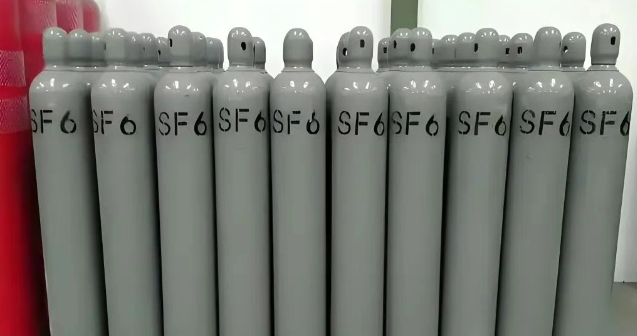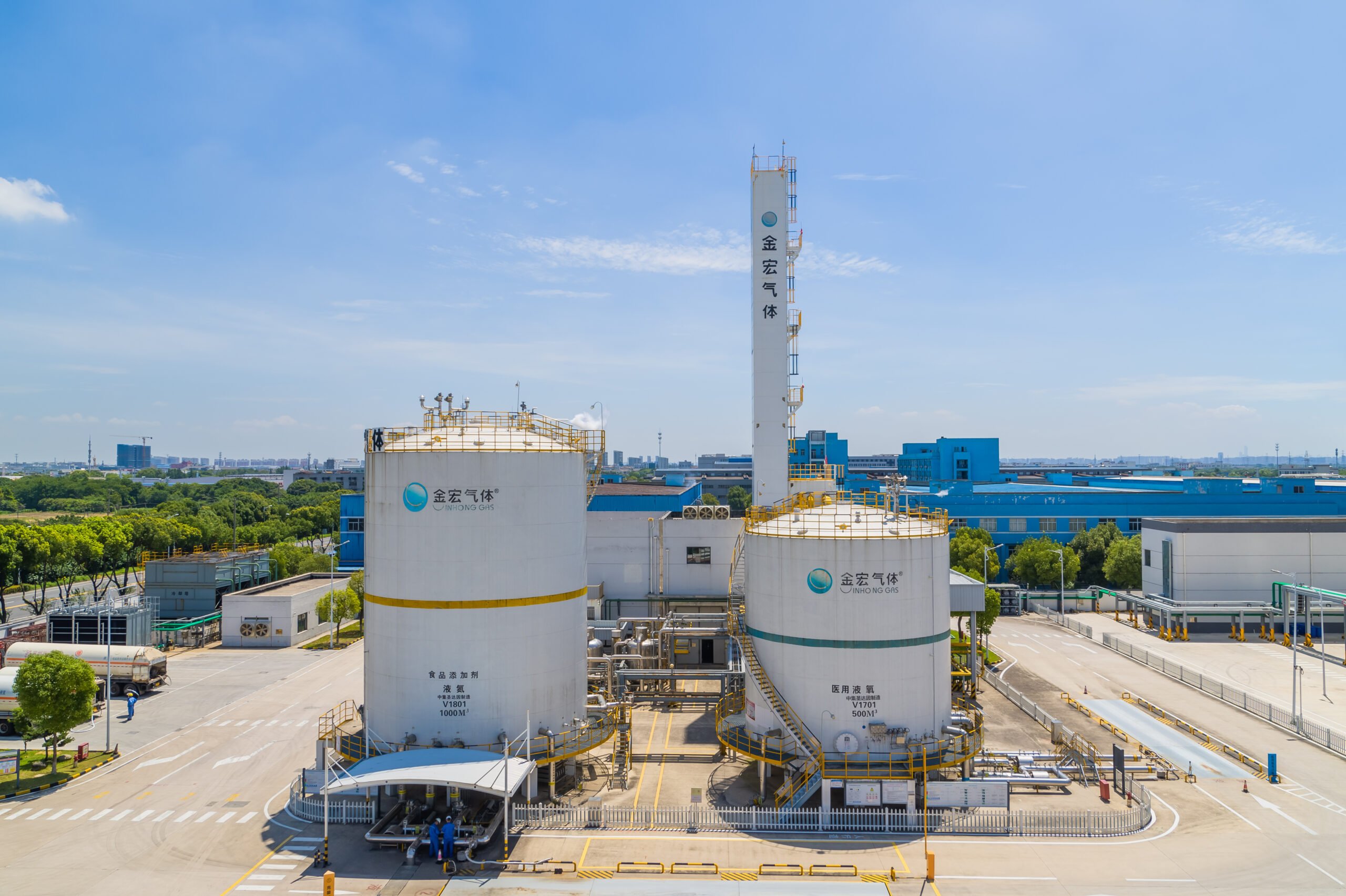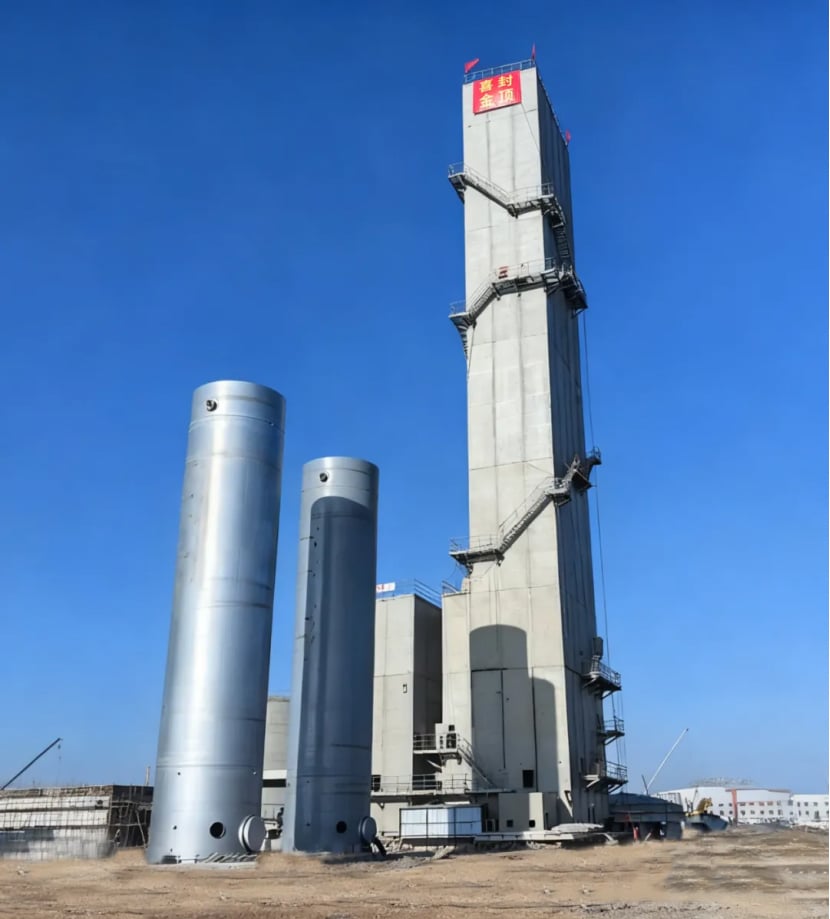I. Overview of Sulfur Hexafluoride (SF₆)
Sulfur hexafluoride (SF₆) was first synthesized in 1900 by French chemists Moissan and Lebeau as an artificial inert gas. Around 1940, the U.S. military adopted it for the Manhattan Project (nuclear weapons development).

SF₆ is an inorganic compound. Under standard temperature and pressure, it exists as a colorless, odorless, non-toxic, non-flammable, and stable gas. Its molecular structure adopts an octahedral arrangement, characterized by short bond distances and high bond energy, resulting in exceptional stability. At temperatures below 180°C, its compatibility with electrical structural materials is comparable to that of nitrogen.

Molecular Formula of SF₆
SF₆ is a highly electronegative gas. Its molecules readily adsorb free electrons to form heavy negative ions, suppressing collision ionization within the gas. This property grants it extremely high electrical insulation strength—approximately 2.5 times that of air in uniform electric fields. During the zero-crossing of alternating current (AC) arcs, SF₆ exhibits far superior arc channel cooling compared to air, with an arc quenching capacity about 100 times greater than air.
When exposed to electric arcs, SF₆ decomposes. Thermal decomposition peaks at temperatures around 2000 K, and at temperatures exceeding 4000 K, most decomposition products are sulfur and fluorine monoatoms. After arc extinction, the majority of these decomposition products recombine into stable SF₆ molecules, making it ideal for high-voltage equipment.
SF₆ is typically stored in high-pressure cylinders, similar to oxygen and carbon dioxide, ensuring ease of transport and use.
Molecular Structure of SF₆
The SF₆ molecule consists of one sulfur atom and six fluorine atoms arranged in an octahedral structure. This configuration gives SF₆ gas extremely high polarity and strong polarization capability in electric fields. The polarization effect allows SF₆ to effectively block current flow, endowing it with excellent insulating properties.
Key Characteristics of Sulfur Hexafluoride (SF₆):
01. Colorless, Odorless, Non-toxic
Under ambient conditions, SF₆ is a colorless, odorless, and non-toxic gas.
02. Non-flammable and Non-explosive
SF₆ is a stable compound that resists combustion or explosion.
03. Density
SF₆ gas is approximately 5 times denser than air, causing it to accumulate in low-lying areas and resist diffusion.
04. Chemical Stability
SF₆ does not spontaneously decompose or react with most substances. It is one of the most chemically stable materials known, with inertness comparable to nitrogen. It demonstrates outstanding thermal stability, remaining undecomposed even at temperatures above 500°C in its pure form.
05. Electrical Insulation
SF₆ exhibits exceptional electrical insulation and arc quenching performance. Under identical conditions, its insulating capacity exceeds that of air and nitrogen by 2.5 times, while its arc quenching capability is 100 times greater than air.
SF₆ Switchgear Operating Pressure
The typical pressure for SF₆ switchgear is approximately 2.45 bar.
| Item | China National Standard (GB12022–89) | IEC Standard (IEC376–71) |
| Sulphur Hexafluoride (SF₆) / % | ≥ 99.8 | ≥ 99.8 |
| Air / % | ≤ 0.05 | ≤ 0.05 |
| Carbon Tetrafluoride (CF₄) / % | ≤ 0.05 | ≤ 0.05 |
| Moisture / ppm | ≤ 8 | ≤ 15 |
| Acidity (as HF) / ppm | ≤ 0.3 | ≤ 0.3 |
| Hydrolyzable Fluoride (as HF) / ppm | ≤ 1 | ≤ 1 |
| Mineral Oil / ppm | ≤ 10 | ≤ 10 |
| Toxicity | Non-toxic as biological test | Non-toxic as biological test |
II. Applications of Sulfur Hexafluoride (SF₆) Gas
- Metal Smelting & Atmospheric Tracers:
High-purity SF₆ is widely used in metal smelting, atmospheric tracing, and electronics manufacturing due to its chemical inertness, non-toxicity, non-flammability, and non-corrosive properties. - Microelectronics Etching:
Electronic-grade high-purity SF₆ serves as an ideal etching agent, extensively applied in microelectronics and semiconductor fabrication. - Refrigeration:
In the cryogenic industry, high-purity SF₆ acts as a refrigerant, operating effectively within a temperature range of -45°C to 0°C. - Mining Industry:
SF₆ gas functions as an anti-adsorption agent in mining operations, displacing oxygen in coal dust environments to mitigate explosion risks. - Electrical Engineering:
Leveraging its exceptional dielectric strength and arc-quenching performance, SF₆ is utilized in:- High-voltage switchgear;
- Large-capacity transformers;
- High-voltage cables;
- Gas-insulated materials.
- Medical Applications:
- Retinal Detachment Surgery: Used as a gas tamponade for retinal reattachment.
- Ultrasound Imaging: Employed as a contrast agent to enhance imaging clarity.
Other Uses:
- Magnesium smelting;
- Leak detection systems;
- Acoustic experiments (e.g., sound velocity studies in gases).
III. Global Major Suppliers
Globally, the primary suppliers of sulfur hexafluoride (SF₆) gas include DILO (Germany), WestAir Gases & Equipment Inc. (USA), and Concorde Specialty Gases (USA). These companies typically offer high-purity SF₆ products compliant with industrial standards, along with gas recovery equipment, safety training programs, and customized packaging solutions. They serve diverse industries such as power, electronics, and healthcare.
Advantages of Choosing Chinese Suppliers:
- Cost Efficiency: Chinese suppliers provide 30–50% cost savings compared to Western counterparts.
- Customization:
- Tailored purity levels (99.9% to 99.999%);
- Flexible packaging (10L, 40L, 50L, 100L cylinders);
- Logistics optimization (air/sea freight compliance).
- Certifications & Compliance: Expertise in international standards (REACH, ISO) with full documentation support (GC reports, certificates of analysis).
- Seamless Service: English-speaking teams ensure end-to-end communication, reducing cross-border procurement risks and delays.
For international clients seeking cost-effective SF₆ procurement without compromising quality, partnering with us guarantees reliable performance and significant total cost reduction.
IV. Procurement Guide: Selecting an SF₆ Supplier
4.1 Purity Requirements
| Application | Typical Purity | Critical Parameters |
| Electrical Industry | 99.995% | Dielectric strength, arc quenching |
| Electronics/Research | 99.999% | Trace impurities <1 ppm |
| Medical Use | 99.9995% | USP/EP compliance |
Action Step: Request gas chromatography (GC) reports to verify purity for your specific application.
4.2 Packaging & Specifications
| Cylinder Size | Capacity | Use Case |
| 10L | 1.5 kg | Lab/R&D |
| 40L | 6 kg | Small-scale industrial |
| 100L | 15 kg | Large-scale projects |
Recommendation: Industrial users should prioritize bulk cylinders or integrated gas recovery systems.
4.3 Transport & Storage
- Regulatory Compliance:
- Classified as UN1080 (non-flammable compressed gas);
- Requires pressure-tested cylinders with safety valves and hazard labels.
- Storage Guidelines:
- Ventilated, dry areas (<50°C);
- Secure upright positioning to prevent leaks.
4.4 Supplier Evaluation Checklist
Verify the following before ordering:
✅ Certifications: ISO 9001, REACH, or industry-specific approvals.
✅ Customization: Ability to adjust purity/cylinder types.
✅ Documentation: COA (Certificate of Analysis), MSDS, and export compliance papers.
✅ Export Experience: Proven track record in hazardous goods logistics (e.g., IMDG/IATA compliance).
Pro Tip: Compare quotes from 3–5 suppliers, prioritizing total value (quality + service + cost) over price alone.

V. Safety and Health Impacts of SF₆
Is SF₆ Safe?
While sulfur hexafluoride (SF₆) in its pure state is non-toxic, arcs or corona discharges can decompose it into toxic low-fluorine compounds (e.g., SF₄, S₂F₁₀, HF). These decomposition products not only damage insulation materials but are also highly toxic to humans.
Health Hazards
- High-Concentration Exposure: Symptoms include difficulty breathing, wheezing, cyanosis (blue discoloration of the skin and mucous membranes), and convulsions.
- Asphyxiation Risk:
- SF₆ displaces oxygen in confined spaces. When its concentration in the air exceeds 19% by volume, it leads to oxygen deprivation and suffocation.
- Inhalation of an 80% SF₆ + 20% O₂ mixture can cause limb numbness and fatal asphyxiation within minutes.
Critical Requirement: Regular SF₆ leak detection and preventive measures are essential to mitigate risks.
5.1 On-Site Safety Protocols for SF₆ Equipment
General Inspections
- Ventilation: Areas without SF₆ gas monitors must be ventilated for 15 minutes before entry. Use gas detectors to confirm SF₆ levels are within safe limits.
- Access Control:
- Solo inspections or maintenance are strictly prohibited.
- At least two personnel must be present during operations.
Special Zone Checks
Before entering low-lying areas or cable trenches:
- Measure oxygen levels to ensure they are ≥18%.
- Confirm SF₆ concentration does not exceed 1,000 μL/L (1 ppm).
Ventilation Systems
- Air intakes in SF₆ equipment rooms must be installed at floor level to facilitate effective gas dispersion.
- Ensure ventilation switches are located outdoors and function properly.
Monitoring and Alarms
- Install SF₆ and oxygen detectors in low-lying areas.
- Place real-time monitoring displays at room entrances.
- Perform quarterly calibration of all detection equipment.
Additional Precautions for GIS Equipment
- Emergency Response for Leaks:
- In the event of a major SF₆ leak, evacuate immediately and activate ventilation systems.
- Post-Incident Protocols:
- For the first 4 hours after a leak, personnel entering the area must wear full protective gear, including chemical-resistant suits, gloves, and oxygen-supplied respirators.
- The same protective measures apply when cleaning solid decomposition byproducts in GIS chambers.
- Gas Recovery: SF₆ must be purified and recycled using dedicated systems. Never release it into the atmosphere.
- Prohibited Actions: Climbing on GIS equipment during maintenance is strictly forbidden.
Key Notes:
- Compliance with IEC 62271-203 and OSHA standards is mandatory.
- Regular training on SF₆ handling and emergency procedures is critical for personnel safety.
VI. Frequently Asked Questions (FAQs)
Q1: Why is SF₆ being phased out?
A1: SF₆ has an extremely high Global Warming Potential (GWP = 23,500× CO₂), making it a severe environmental concern. Its use is restricted or banned under regulations such as the EU F-Gas Regulation and the Kyoto Protocol due to its contribution to climate change.
Q2: Is inhaling SF₆ safe?
A2: Brief exposure to small amounts of pure SF₆ is generally non-toxic. However, its oxygen-displacing properties pose asphyxiation risks in confined spaces. Prolonged exposure to decomposition byproducts (e.g., HF, S₂F₁₀) can cause severe health effects. Always adhere to OSHA’s Permissible Exposure Limit (PEL) of 1,000 ppm.
Q3: Who are reliable SF₆ gas suppliers?
We specialize in industrial gases with 20+ years of expertise, offering:
- Cost-Effective Solutions: 30–50% lower pricing than Western suppliers.
- Customization: Purity grades (99.9%–99.999%), cylinder sizes (10L–100L), and logistics modes.
- Compliance Assurance: Full documentation for REACH, ISO, and IEC standards, including gas chromatography (GC) reports.
- Global Support: English-speaking teams handle end-to-end procurement, ensuring seamless cross-border coordination and reduced lead times.
Why Choose Us?
✅ Stable upstream supply chains
✅ Established hazardous goods logistics (IMDG/IATA compliant)
✅ 24/7 technical support
source:
https://en.wikipedia.org/wiki/Sulfur_hexafluoride



